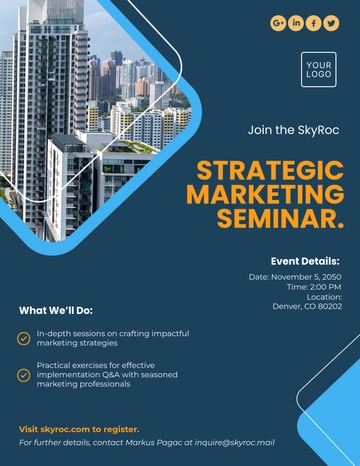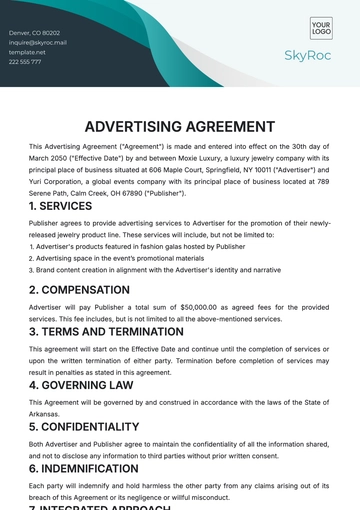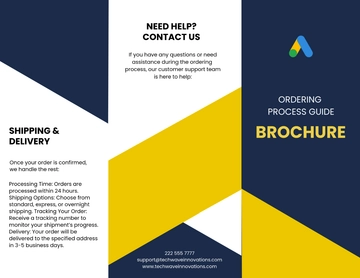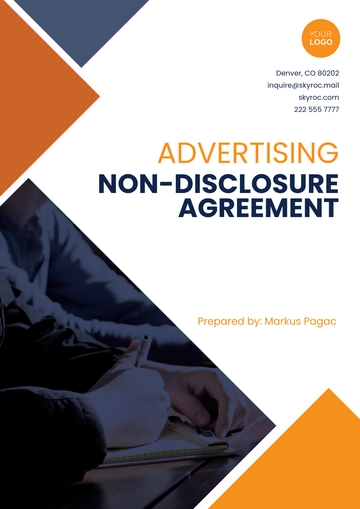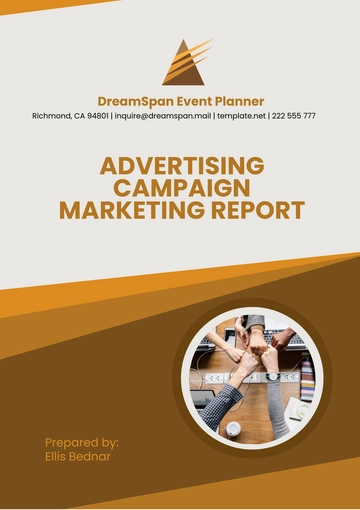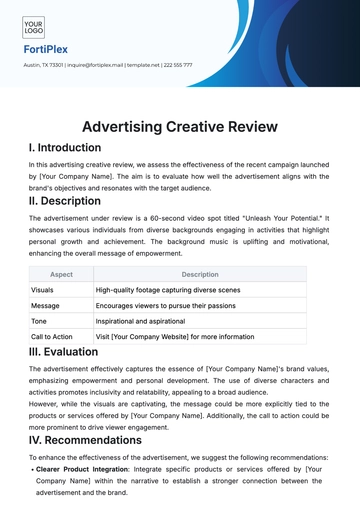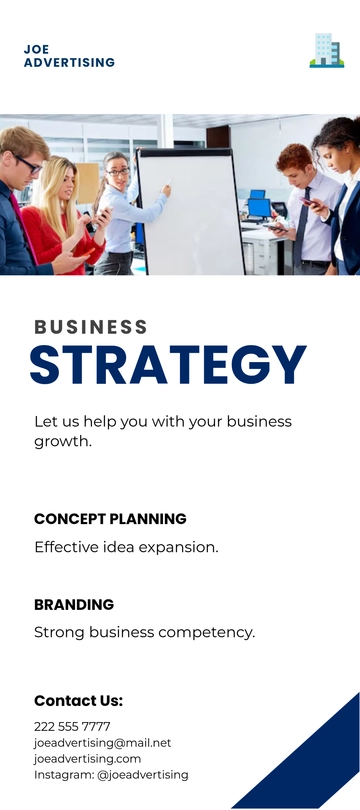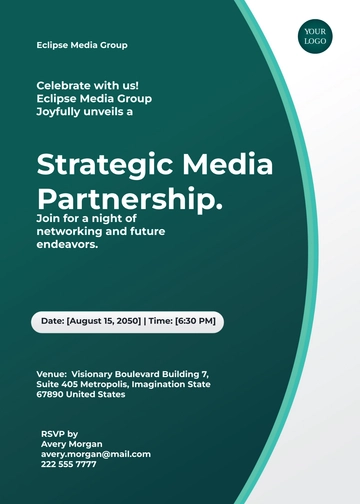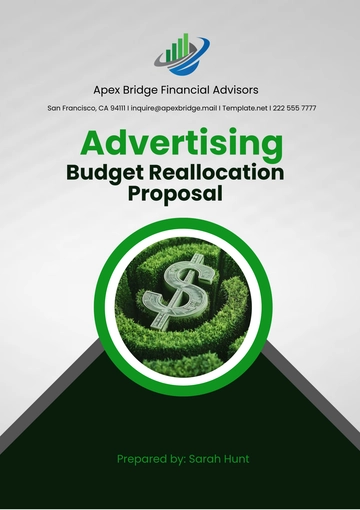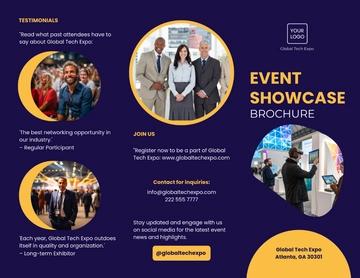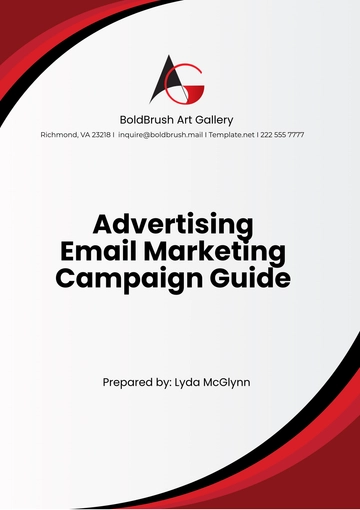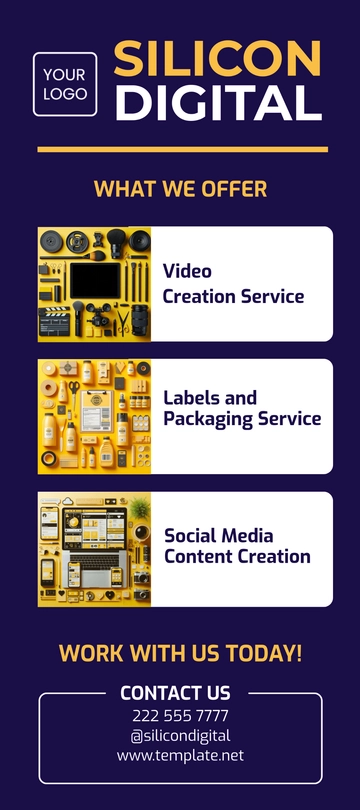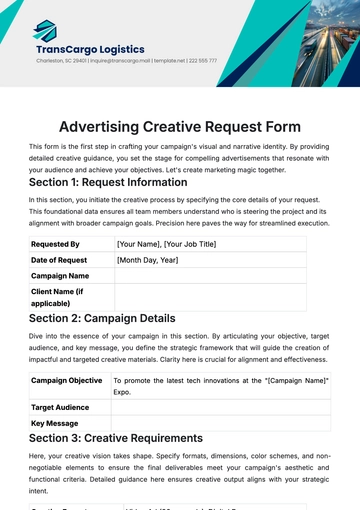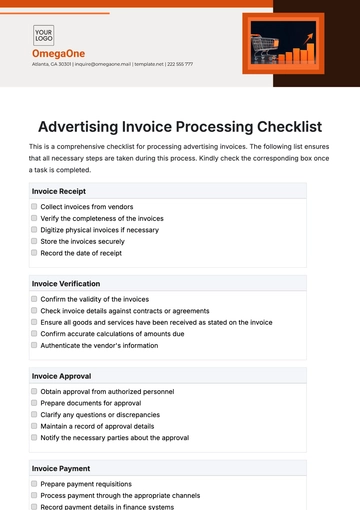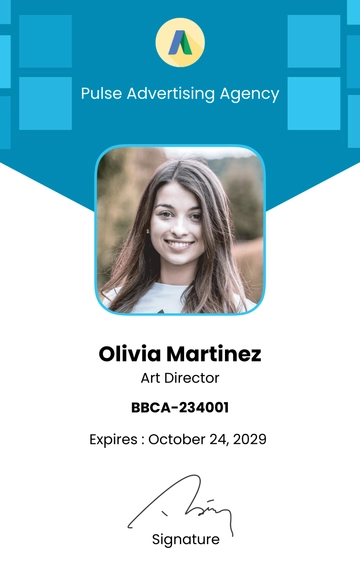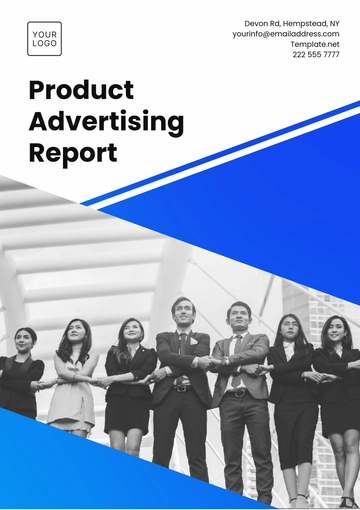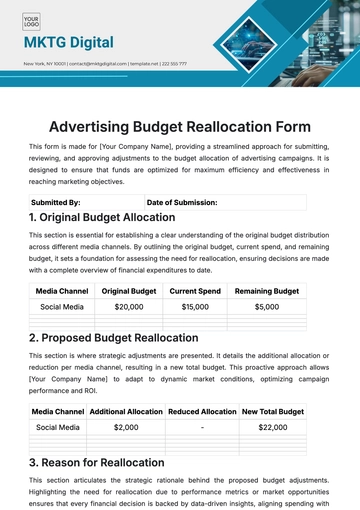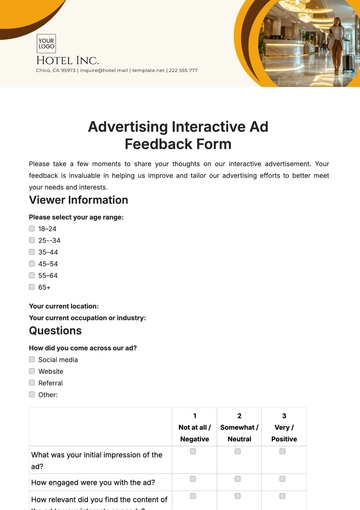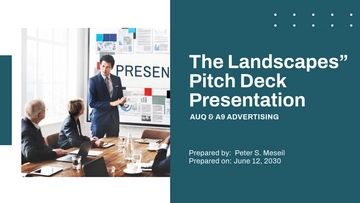Free Influencer Event Management Advertising Guide
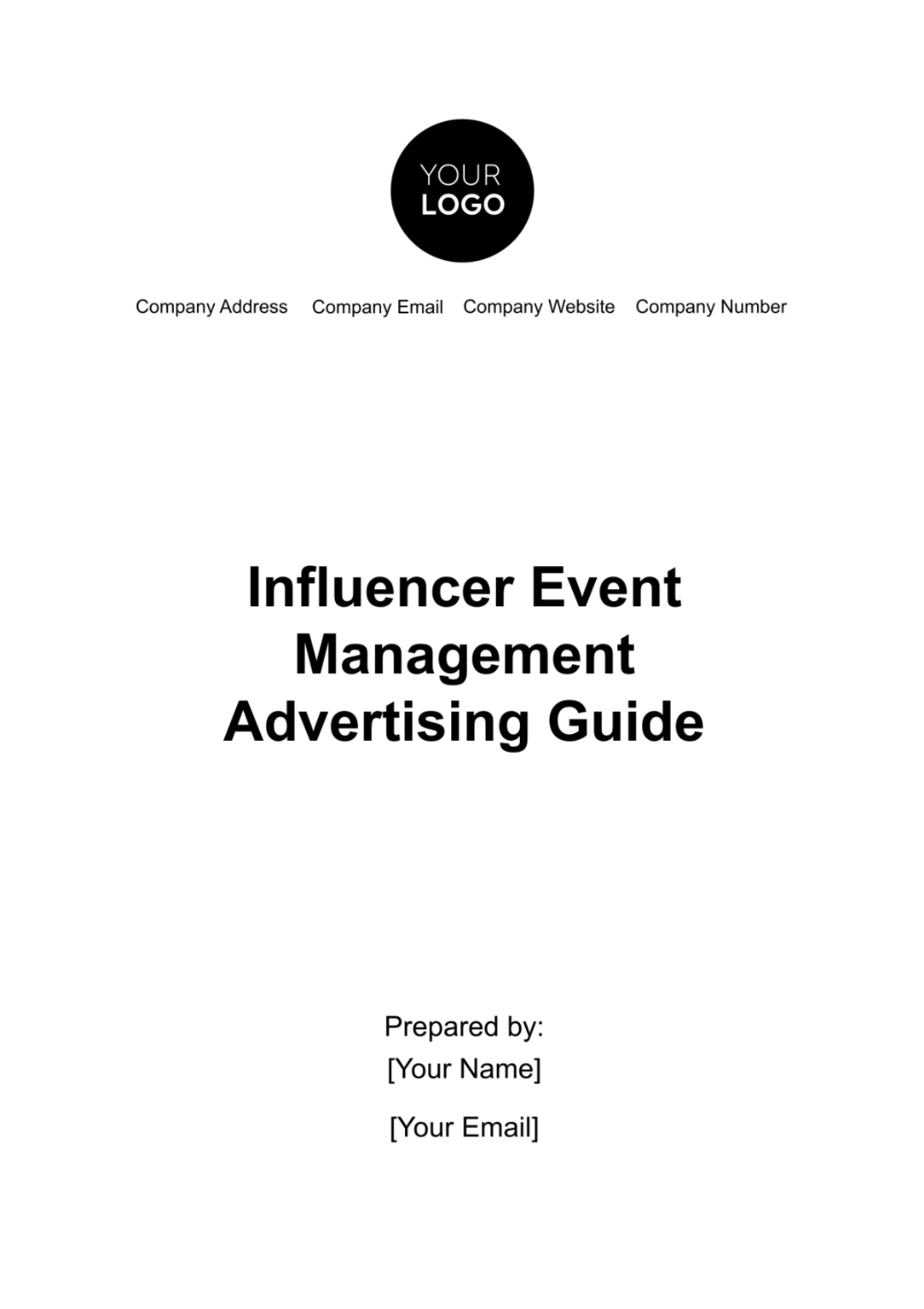
1. Introduction
In today's digitally-driven marketing landscape, the fusion of influencer collaboration and event advertising represents a powerful strategy to amplify brand visibility and engagement. This guide is meticulously crafted to provide [Your Company Name] with an innovative and strategic approach to integrating influencers into its event advertising efforts. The essence of this strategy lies in harnessing the influential power of social media personalities, bloggers, and industry leaders to elevate the reach and impact of your events.
The integration of influencers in event advertising is more than just a trend; it's a pivotal shift in how brands interact with their audiences. Influencers, with their dedicated followers and authentic voices, can bring a level of relatability and trust to your brand that traditional advertising channels often cannot match. By leveraging these digital trendsetters, [Your Company Name] can tap into new audience segments, foster deeper connections, and create a buzz around its events that resonates far beyond the day of the event itself.
This guide will navigate through the nuances of selecting the right influencers who align with your brand ethos, developing collaborative content strategies that resonate with your target audience, and measuring the success of these partnerships through relevant metrics. Furthermore, it will delve into budgeting considerations, ensuring that your influencer marketing investments are both effective and financially sound.
The culmination of this approach aims not only to elevate immediate event success but also to build a sustainable model for future advertising endeavors. By embracing this influencer-centric strategy, [Your Company Name] is poised to set new benchmarks in audience engagement and brand loyalty, ultimately driving a significant return on investment (ROI). Welcome to a new era of event advertising – one that is dynamic, influencer-driven, and exceptionally engaging.
2. Influencer Selection and Collaboration
Selection Criteria
Influencer marketing is not just about numbers; it's about finding the right voice that resonates with your brand and audience. The selection of influencers for [Your Company Name] should be a careful and strategic process, guided by the following criteria:
Relevance: The chosen influencers should embody and reflect the core values and aesthetics of [Your Company Name]. This alignment ensures that the influencer's content and audience are a natural fit for your brand.
Reach: Consideration of the influencer's follower count and audience demographics is crucial. However, it's not just about large numbers; it's about the quality and relevance of the audience to [Your Company Name].
Engagement Rate: High audience interaction, reflected in likes, comments, and shares, is indicative of an influencer's ability to actively engage their followers. This metric often provides more insight into the influencer's impact than sheer follower numbers.
Collaboration Approach
A successful influencer collaboration is built on clear communication and mutual understanding. The following approaches should guide your collaborations:
Content Co-Creation: Encourage a collaborative environment where influencers can work closely with [Your Company Name] to develop creative, event-specific content. This partnership ensures authenticity and a seamless blend of the influencer's style with your brand messaging.
Contractual Agreements: It is vital to establish clear contractual agreements detailing deliverables, timelines, compensation, and legal considerations.
These agreements should cover:
Scope of Work: Clearly defined tasks and expectations.
Content Guidelines: Outline the tone, style, and any specific messaging to be included.
Compensation Structure: Payment terms, including any performance-based incentives.
Usage Rights: Agreement on how the content will be used and for how long.
Disclosure Requirements: Ensuring compliance with legal standards for sponsored content.
Influencer Collaboration Table
The table below outlines a structured approach to influencer collaboration:
Influencer Name | Platform | Relevance to Brand | Follower Count | Engagement Rate | Content Focus |
[Influencer 1] | [Platform] | [High/Medium/Low] | [Number] | XX% | [Event Theme] |
This structured approach to influencer selection and collaboration ensures that [Your Company Name]'s influencer partnerships are strategic, effective, and aligned with its overall marketing objectives. By following these guidelines, [Your Company Name] can maximize the impact of its influencer collaborations, driving greater brand awareness and engagement for its events.
3. Event Advertising Strategy
A well-orchestrated event advertising strategy is pivotal in leveraging influencers to maximize the impact of [Your Company Name]'s events. This strategy encompasses distinct stages - pre-event, during the event, and post-event - each with its unique set of objectives and methods. The goal is to create a continuous and engaging narrative around the event, maintaining audience interest and interaction throughout these stages.
Strategy Breakdown
The table below outlines the strategic approach for each stage of the event, detailing the types of content and deliverables, along with the associated timelines.
Stage | Strategy | Deliverables | Timeline |
Pre-Event | Teasers, Announcements | Posts, Stories | [Date Range] |
During Event | Live Coverage, Promotions | Live Videos, Posts | [Event Date] |
Post-Event | Highlights, Follow-Up Campaigns | Recap Content | [Date Range] |
Pre-Event
Objective: Build anticipation and inform potential attendees about the event.
Approach: Use teasers and announcements to gradually unveil event details. Influencers can create buzz through countdowns, sneak peeks, and behind-the-scenes content.
Deliverables: Engaging social media posts and stories that highlight key attractions of the event.
During Event
Objective: Captivate the online audience and provide real-time event experiences.
Approach: Influencers provide live coverage, including streaming key moments, conducting live interviews, and sharing real-time updates.
Deliverables: Live videos and regular posts capturing the essence of the event, promotional content highlighting on-site activities or offers.
Post-Event
Objective: Sustain engagement and capitalize on the event's success.
Approach: Share highlights and key takeaways from the event, and initiate follow-up campaigns based on event content or feedback.
Deliverables: Recap videos, blog posts, and social media content that summarize the event experience, along with follow-up promotional campaigns or calls to action
This strategic roadmap for event advertising via influencer collaboration ensures that each stage of the event lifecycle is effectively utilized to enhance audience engagement and maximize event impact. By following this approach, [Your Company Name] can ensure a cohesive and dynamic advertising narrative that resonates with its audience and strengthens its brand presence.
4. Engagement and Conversion Metrics
Measuring the success of an influencer event advertising campaign requires a keen focus on specific metrics. Engagement rate, conversion rate, and audience growth are three crucial indicators that shed light on the effectiveness of the event at different stages. Analyzing these metrics provides insights into how well the audience interacted with the content, the degree to which they were motivated to take action, and the overall growth in the audience base as a result of the event.
Detailed Metrics Analysis
The table below provides a comprehensive overview of these key metrics across different stages of the event:
Metric | Pre-Event | During Event | Post-Event |
Engagement Rate | 10% | ||
Conversion Rate | 10% | ||
Audience Growth | 10% |
Engagement Rate
Pre-Event: Measures how effectively the pre-event content (teasers, announcements) engaged the audience. A higher rate indicates successful anticipation building.
During Event: Reflects the level of audience interaction with live content and real-time updates. A vital metric to gauge in-the-moment engagement.
Post-Event: Assesses how post-event content (recaps, follow-ups) maintained audience interest and interaction after the event.
Conversion Rate
Pre-Event: Tracks conversions from pre-event campaigns, such as sign-ups, ticket sales, or app downloads.
During Event: Measures conversions during the event, including on-site sign-ups, product purchases, or participation in promotions.
Post-Event: Focuses on conversions resulting from post-event content, such as feedback submissions, continued purchases, or registrations for future events.
Audience Growth
Pre-Event: Indicates the increase in followers or subscribers in anticipation of the event.
During Event: Captures audience growth during the event, demonstrating the reach and appeal of live content.
Post-Event: Measures sustained audience growth following the event, indicating the long-term impact of the campaign.
By closely monitoring these metrics, [Your Company Name] can gauge the impact of its influencer event advertising campaign and identify areas for improvement. Understanding these dynamics helps in fine-tuning strategies for future events, ensuring a more engaging and conversion-driven approach.
5. Budget and Financial Planning
Effective budget management and financial planning are fundamental to the success of any influencer event advertising campaign. This section provides a detailed breakdown of the budgetary aspects of [Your Company Name]'s influencer event, covering key expenditure areas such as influencer fees, production costs, and promotional materials. It juxtaposes the estimated budget against the actual spend to highlight variances and offers insights for more accurate budgeting in future campaigns.
Budget Breakdown
The table below outlines the financial planning and expenditure for the influencer event campaign:
Item | Estimated Budget | Actual Spend | Variance |
Influencer Fees | [$1000] | ||
Production Costs | [$1000] | ||
Promotional Materials | [$1000] |
Influencer Fees
Estimated Budget: Anticipated cost for engaging influencers, based on their reach, engagement rate, and contractual agreements.
Actual Spend: The actual amount spent on influencer fees.
Variance: The difference between the estimated budget and actual spending, indicating the accuracy of budget predictions.
Production Costs
Estimated Budget: Expected costs for creating event-related content, including videos, graphics, and other media.
Actual Spend: The total expenditure on production.
Variance: Highlights any under or overspending in production, guiding future budget allocations.
Promotional Materials
Estimated Budget: Costs projected for creating and distributing promotional materials, both digital and physical.
Actual Spend: Actual amount spent on promotional materials.
Variance: Identifies discrepancies, providing insights into the efficiency of promotional spending.
Financial Insights and Future Planning
Analyzing these financial metrics is crucial for [Your Company Name] in understanding the cost-effectiveness of its influencer event advertising. The variances between estimated and actual spending offer valuable lessons in budget allocation and financial forecasting. By continuously refining these estimates based on actual campaign data, [Your Company Name] can enhance its financial planning, ensuring that future events are not only successful in terms of engagement and reach but also financially sustainable and efficient.
6. Post-Event Analysis and Reporting
A comprehensive post-event analysis is essential to assess the effectiveness of the influencer event advertising campaign. This process involves a detailed evaluation of campaign performance, audience feedback, and return on investment (ROI) analysis. It provides [Your Company Name] with crucial insights into what worked, what didn't, and how future events can be optimized for better results.
Campaign Performance Analysis
This section scrutinizes various aspects of the campaign's performance. Key performance indicators (KPIs) are evaluated to understand the campaign's impact in terms of engagement, reach, and conversions.
Metric | Target | Achieved | Variance |
Engagement Rate | 10% | ||
Conversion Rate | 10% | ||
Audience Growth | 10% | ||
Reach | [10,000] |
Key Insights:
Engagement Rate: How effectively the influencer content resonated with the audience.
Conversion Rate: The success rate of turning viewers or participants into leads or customers.
Audience Growth: The increase in the follower base or subscribers as a result of the event.
Reach: The total number of unique users who saw the event content.
Audience Feedback
Gathering and analyzing audience feedback is crucial for understanding the attendees experience and perception of the event.
Surveys and Polls: Utilize post-event surveys and polls to gather attendee opinions.
Social Media Analysis: Monitor social media channels for audience reactions and comments.
Feedback Themes: Identify common themes or suggestions in the feedback for future improvement.
ROI Analysis
Evaluating the ROI of the event is fundamental to measuring the financial efficiency of the advertising campaign.
Total Spend vs Total Revenue: Compare the overall budget of the campaign against the revenue generated directly from the event.
Cost-Per-Lead: Calculate the cost incurred for acquiring each lead through the event.
Long-Term Value: Consider the long-term value generated by new customers or partners acquired through the event.
Post-event analysis and reporting provide [Your Company Name] with a 360-degree view of the event's impact. This process not only highlights the successes and areas for improvement but also guides strategic decision-making for future events. By thoroughly evaluating each aspect of the campaign, [Your Company Name] can refine its event advertising strategies, ensuring continuous improvement and greater success in future endeavors.
7. Long-term Influencer Relationships
In the realm of influencer marketing, cultivating long-term relationships is key to sustained brand promotion and success. Rather than one-off campaigns, enduring partnerships with influencers can yield ongoing benefits, including consistent brand messaging, deeper audience engagement, and enhanced trust. For [Your Company Name], developing strategies for nurturing these relationships is crucial.
Building and Maintaining Lasting Partnerships
Selective Partnership: Focus on influencers whose values and audience align closely with your brand. Long-term relationships should be built on mutual interests and goals.
Regular Communication: Maintain open and consistent communication channels. Regular check-ins, feedback sessions, and updates about brand developments keep influencers engaged and informed.
Creative Freedom: Allow influencers a degree of creative freedom. This not only fosters trust but also leads to more authentic and effective content.
Recognition and Incentives: Acknowledge influencers' efforts and successes. Incentives, such as bonuses for milestone achievements or public acknowledgments, can strengthen the relationship.
Collaborative Growth Opportunities: Involve influencers in brand growth strategies. This could include co-branded products, ambassador programs, or participation in corporate social responsibility initiatives.
Contractual Stability: Provide long-term contracts that offer stability and security to influencers. This shows commitment and fosters a dependable relationship.
Feedback Loop: Implement a two-way feedback system. Constructive feedback helps improve campaign strategies, while also valuing influencers' insights and experiences.
Exclusive Events and Perks: Invite influencers to exclusive brand events or offer them early access to new products. Such perks make influencers feel valued and part of the brand family.
Adaptability: Be adaptable to influencers’ evolving content styles, platforms, and audience preferences. This shows support for their growth and relevance.
The Impact of Long-term Relationships
By investing in these long-term influencer relationships, [Your Company Name] not only enhances its current marketing efforts but also secures a reliable and influential voice for its brand in the long run. These enduring partnerships lead to more integrated, cohesive, and impactful brand promotion, driving sustained engagement and loyalty among audiences.
8. Case Studies and Success Stories
Analyzing case studies and success stories of influencer event campaigns provide valuable insights into effective strategies and their outcomes. For [Your Company Name], examining these examples can offer inspiration and guidance for future campaigns. Below are highlighted case studies showcasing successful influencer collaborations, detailing the strategies employed and the outcomes achieved.
Case Study Breakdown
Case Study | Influencer | Event Type | Strategy Used | Outcome Achieved |
[Case Study Name 1] | [Influencer Name] | [Event Type] | Collaborative Content Creation | Increased Brand Awareness by 10% |
Detailed Analysis:
[Case Study Name 1]:
Strategy: The influencer collaborated closely with the brand to create unique, engaging content specific to the event.
Outcome: This approach led to a significant boost in brand awareness and audience reach.
[Case Study Name 2]:
Strategy: The influencer provided real-time coverage of the event, sharing live updates and behind-the-scenes content.
Outcome: The campaign saw a surge in social media engagement and interactions during the event.
[Case Study Name 3]:
Strategy: Exclusive previews of the event and special offers were provided by the influencer to their followers.
Outcome: This exclusivity led to increased anticipation and a higher attendance rate at the event.
[Case Study Name 4]:
Strategy: The influencer engaged the audience with interactive initiatives like Q&A sessions, polls, and contests.
Outcome: These activities translated into a higher conversion rate, turning engaged audiences into active participants or customers.
These case studies exemplify the power of influencer marketing in event advertising. They demonstrate how creative strategies, when aligned with the right influencers, can lead to remarkable outcomes, from heightened brand awareness to increased audience engagement and conversion rates. For [Your Company Name], these success stories serve as a blueprint for leveraging influencer partnerships effectively to achieve similar results in future event campaigns.
9. Future Trends and Opportunities
The landscape of influencer marketing is constantly evolving, with new trends emerging that can significantly impact the efficacy of advertising strategies. For [Your Company Name], staying abreast of these developments and adapting to them is crucial for maintaining a competitive edge. This section explores the latest trends in influencer marketing and how they can be leveraged to enhance [Your Company Name]'s future event advertising campaigns.
Emerging Trends
Micro and Nano Influencers: A shift towards partnering with micro and nano influencers, who, despite smaller followings, often boast higher engagement rates and niche audiences.
Authentic and Raw Content: Audiences are increasingly valuing authenticity. There's a growing preference for unfiltered, behind-the-scenes content, as opposed to highly polished and scripted posts.
Video and Live Streaming: The rise of video content, particularly live streaming, continues to dominate social media. This medium offers real-time engagement and can significantly amplify event reach.
Influencer-Led Virtual Events: With the growing prevalence of virtual and hybrid events, influencers can play a key role in hosting or promoting these digital experiences.
AI and Data-Driven Matchmaking: Leveraging artificial intelligence to match brands with the most suitable influencers based on data-driven insights.
Sustainability and Social Responsibility: Collaborating with influencers who advocate for sustainability and social responsibility, aligning with public sentiment and ethical marketing.
How [Your Company Name] Can Leverage These Trends
Diversify Influencer Portfolio: By engaging with a mix of macro, micro, and nano influencers, [Your Company Name] can tap into varied audience segments, enhancing campaign reach and authenticity.
Embrace Video Content: Invest in creating engaging video content, including live streams, to captivate audiences and provide immersive event experiences.
Host Virtual Influencer Events: Organize influencer-led virtual events or webinars that can attract a broader audience and offer unique brand experiences.
Utilize AI for Influencer Selection: Adopt AI tools for more precise and effective influencer partnerships, ensuring optimal alignment with the brand's target audience and values.
Promote Sustainable Practices: Partner with influencers who are vocal about sustainability, reflecting [Your Company Name]'s commitment to social responsibility and appealing to environmentally conscious consumers.
Adapting to these emerging trends in influencer marketing presents [Your Company Name] with numerous opportunities to innovate and stay ahead in the dynamic world of event advertising. By strategically incorporating these trends, the company can enhance its brand appeal, foster deeper audience connections, and achieve greater impact in its future campaigns.
10. Conclusion
This comprehensive guide encapsulates a strategic approach for integrating influencers into [Your Company Name]'s event advertising, highlighting key areas such as influencer selection, collaborative content creation, and meticulous budgeting. The insights drawn from engagement and conversion metrics, coupled with lessons from successful case studies, pave the way for adopting emerging trends in the influencer marketing landscape. Embracing these strategies and insights, [Your Company Name] is well-positioned to enhance its event advertising effectiveness, foster lasting influencer relationships, and capitalize on future opportunities. This guide serves as a roadmap for evolving [Your Company Name]'s event advertising approach, ensuring it remains dynamic, impactful, and aligned with the ever-changing digital marketing ecosystem.
11. Appendix
Detailed data sets
Influencer profiles
Legal templates
Budgeting tools
- 100% Customizable, free editor
- Access 1 Million+ Templates, photo’s & graphics
- Download or share as a template
- Click and replace photos, graphics, text, backgrounds
- Resize, crop, AI write & more
- Access advanced editor
Enhance your influencer event management with the Influencer Event Management Advertising Guide Template from Template.net. This editable and customizable guide provides a comprehensive roadmap for planning and executing successful influencer events. Utilize the Ai Editor Tool to tailor the guide to your unique needs, ensuring seamless execution and impactful results.
